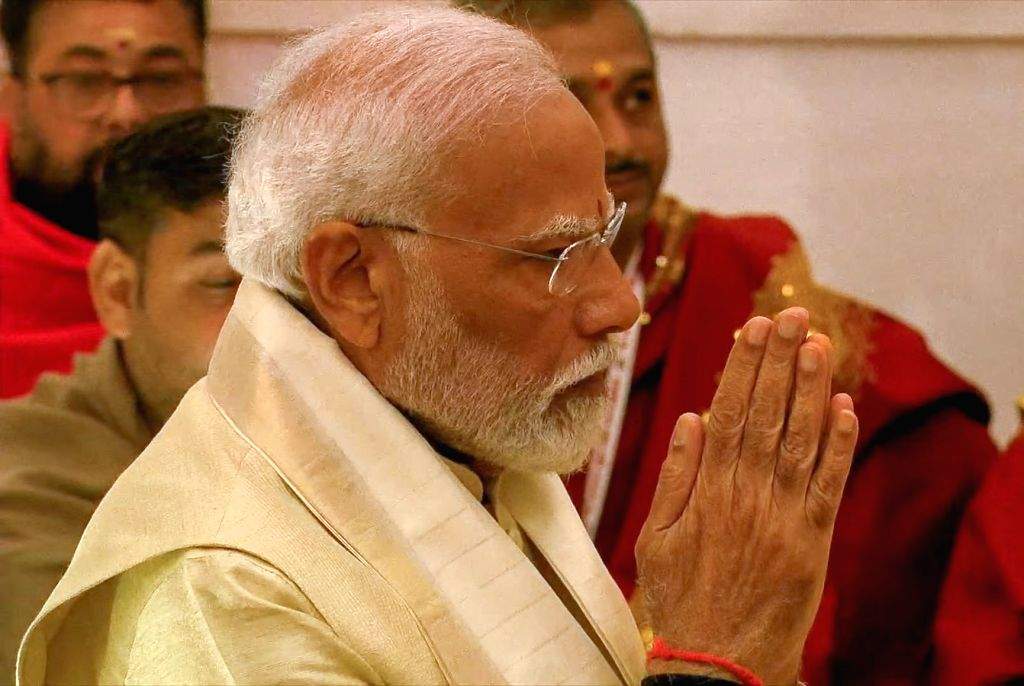In the ancient city of Ayodhya, where the echoes of mythological tales intermingle with the sacred, a monumental chapter is unfolding—the construction of the Ram Mandir, a symbol of devotion and cultural heritage. In this saga, Prime Minister Narendra Modi emerges as the orchestrator of a historic triumph, weaving together the threads of spirituality, unity, and national pride.
Prime Minister Modi’s leadership has been characterized by a rare blend of vision, determination, and a commitment to preserving India’s rich cultural tapestry. The Ram Mandir stands as a testament to this commitment, a manifestation of the aspirations and beliefs of millions of Indians who had yearned for this sacred edifice to grace the spiritual landscape of Ayodhya.
A Vision Unveiled
The journey towards the realization of the Ram Mandir has been arduous, marked by legal battles, societal debates, and political complexities. Prime Minister Modi, however, approached this monumental task with a clear vision and unwavering resolve. His commitment to the cultural ethos of India and the sentiments of millions propelled the endeavor forward.
Modi’s role in expediting the legal and bureaucratic processes surrounding the construction demonstrated a hands-on approach to governance. His determination to navigate the complexities and facilitate the realization of a long-cherished dream underscored not only political acumen but also a profound understanding of the cultural fabric that binds the nation.
Unity in Diversity: A Symbol of National Integration
The construction of the Ram Mandir has become a symbol of unity, transcending religious and cultural divides. Modi’s leadership in this endeavor echoes the principles of inclusivity and national integration. By acknowledging the spiritual significance of Ayodhya to millions of Hindus while respecting the diversity of India, he has laid the foundation for a harmonious coexistence of various religious beliefs.
Under Modi’s stewardship, the Ram Mandir has become a symbol of the secular and pluralistic values enshrined in India’s constitution. The inclusivity demonstrated throughout the process reflects a statesmanship that goes beyond political boundaries, fostering an environment where diverse voices can coalesce into a harmonious chorus.
Preserving Heritage: A Cultural Renaissance
The construction of the Ram Mandir is not merely an architectural feat; it represents a cultural renaissance under Modi’s leadership. By recognizing the importance of preserving and celebrating India’s ancient heritage, Modi has demonstrated a commitment to fostering a cultural reawakening. The Ram Mandir, with its grandeur and spiritual significance, serves as a beacon for the revival of India’s glorious past.
Modi’s emphasis on cultural preservation aligns with his vision of building a resurgent India that draws strength from its historical roots. The Ram Mandir, with its intricate architecture and deep cultural resonance, stands as a testament to the enduring spirit of a civilization that continues to evolve while remaining anchored in its rich past.
Economic Implications: Fostering Development through Faith
Beyond its cultural and spiritual significance, the construction of the Ram Mandir also carries economic implications for the region. The project has generated employment opportunities, stimulated local economies, and spurred infrastructural development in and around Ayodhya. Modi’s foresight in recognizing the multifaceted impact of such a project underscores his commitment to holistic development.
The economic boost resulting from the construction of the Ram Mandir aligns with Modi’s broader vision of ‘Sabka Saath, Sabka Vikas’ (Development for All). By leveraging cultural and spiritual initiatives for economic growth, Modi showcases an innovative approach to nation-building that blends tradition with modernity.
Conclusion: Modi’s Enduring Legacy
In the narrative of the Ram Mandir’s construction, Narendra Modi emerges as a visionary leader whose actions transcend the political arena. His role in the realization of this iconic monument reflects not only political acumen but also a deep understanding of India’s cultural identity. The Ram Mandir stands not just as a physical structure but as a testament to Modi’s commitment to fostering unity, preserving heritage, and steering India towards a future that draws strength from its illustrious past. Modi’s triumph in ushering in the era of Ram Mandir Majesty cements his legacy as a leader who recognizes the pulse of the nation and acts with unwavering determination to fulfill its aspirations.

